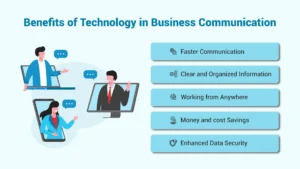Let’s Not Overcomplicate It, Managed It Services vs Break-Fix is One of Those Decisions Most Businesses Face at Some Point. It usually comes up when something goes wrong, or when things are finally growing fast enough that you start asking, “Is our IT setup actually sustainable?”
So, here’s the choice: do you stick with the break-fix model, calling in help only when something breaks, then paying for repairs, or do you sign on for a managed IT services plan where a provider monitors, maintains, and proactively supports your systems for a monthly fee?
On the surface, it seems straightforward. If your business doesn’t rely much on technology, break-fix might feel like the leaner, cheaper option. But if uptime, security, and scalability matter, suddenly managed services start to sound like a no-brainer.
And yet, the decision isn’t always black and white. Plenty of small businesses straddle the line, wondering if they’re “big enough” or “complex enough” for managed services. Others might be stuck in old habits, reacting to problems as they come because, well, that’s just how it’s always been.
This guide is here to clear up the fog. No jargon. No tech-overload. Just a practical, real-world comparison of both models, what they offer, where they fall short, and how to know which one actually fits your business best.
Let’s unpack the pros, the cons, and the in-betweens, so you can make the choice that sets your business up for success.
Key Summary of this Article
- Definition of Break-Fix IT: Break-Fix IT Support is a reactive model where you only pay for repairs when something goes wrong—best suited for small businesses with minimal tech reliance.
- Definition of Managed IT Services (MSPs): Managed IT Services provide proactive monitoring, maintenance, security, and strategic IT planning through a monthly fee—ideal for growing, tech-dependent businesses.
- Break-Fix Pros: no monthly costs, flexibility, and simple billing.
- Break-Fix Cons: unpredictable expenses, downtime risks, and lack of preventive measures.
- Managed IT Pros: predictable costs, stronger security, proactive support, scalability, and access to expert teams.
- Managed IT Cons: ongoing fees and provider dependency.
- Final Decisions – Managed IT Services vs Break-Fix: Which is Right for You? : Break-fix fits very small or short-term needs, but for most modern businesses, managed IT services are the strategic choice to ensure continuity, security, and growth.
What is Break-Fix IT Support?
Break-fix support is kind of like calling a plumber. When something breaks, you call someone to fix it. You get billed for the time and parts, and once it’s working again, that’s that. There’s no ongoing relationship, no check-ins, no monitoring. You’re in control, but you’re also completely on your own until things go wrong.
It’s sometimes referred to as remote IT support, although that’s more about how the help arrives than the model itself. And it lacks the benefit of proactive IT support, meaning no one’s watching for signs of trouble before your system crashes at 10 a.m. on a Monday.
It’s clean, it’s simple. But it can also be a little too simple when things go sideways.

What are Managed IT Services?
Now let’s flip the script. Managed IT services take a different approach. Instead of reacting to problems, your IT provider is actively trying to prevent them. They’re monitoring systems, running updates, handling security patches, answering support tickets, basically managing your tech like an internal team would.
And this is where the real contrast with break-fix services starts to show. Managed services are designed to keep things running, not just fix them when they fall apart.
Think of it this way: a break-fix provider puts out fires. A managed service provider (MSP) makes sure the fire alarm works, the wiring’s solid, and the building’s up to code, so those fires are less likely to happen in the first place.
That kind of proactive care is one of the reasons more businesses are moving toward MSPs. If you’re curious, TechAd offers a simple way to explore this path, check out their booking page to get started.
Pros and Cons of Break-Fix IT Support
Let’s be fair: break-fix has its moments. It’s simple, familiar, and for some businesses, it just feels easier. You don’t pay unless there’s a problem. No monthly invoices, no ongoing contracts. It’s the old-school model, and for a while, it worked well enough.
Pros:
- No monthly fees – You only pay when something actually needs fixing. If your tech setup is rock-solid and rarely gives you trouble, that can feel like a smart, budget-conscious move.
- No long-term commitments – Great for short-term projects, seasonal work, or businesses still finding their footing. You’re not tied to a service plan or provider, and you can call in help as needed.
- Simple billing – Each job is a one-off, with straightforward invoices. It’s easy to track what was done, when, and what it cost.
Cons:
- Unpredictable costs – This one can sting. A single network issue or server failure can cost more than several months of managed IT services. And if problems pile up, costs can spiral quickly.
- No prevention – You’re always reacting to issues instead of preventing them. There’s no monitoring, no alerts, no security patches happening quietly in the background.
- Downtime – When something breaks, the clock starts ticking. Every minute of downtime means lost productivity, or worse, lost revenue, and fixes don’t start until someone’s available.
So yes, for a business with very light IT needs, break-fix might seem like the more cost-effective option. But that short-term saving can disappear fast if your system crashes during a critical moment, say, in the middle of a sales push or a product launch.
Advantages and Disadvantages of Managed IT Services
Now let’s talk about the managed side of things. This isn’t just an IT support model, it’s more of a long-term strategy. You’re not waiting around for problems to show up. Instead, you’re bringing on a dedicated team to watch over your systems around the clock. And for that, you pay a flat monthly fee.
Let’s start with what makes it appealing.

Advantages:
- Proactive support – Instead of reacting to issues, your IT provider is often already working on a fix before you’ve even noticed a glitch. That means less downtime and fewer nasty surprises.
- Predictable costs – A flat monthly rate makes budgeting simpler. No more scrambling to cover unexpected repair bills.
- Stronger security – Regular software updates, automated backups, antivirus monitoring, and compliance support help you stay protected without lifting a finger.
- Access to IT expertise – You’re not relying on one technician. You’re backed by a team of experienced professionals who can guide you through everything from upgrades to cybersecurity strategies.
Those are just a few of the benefits outlined in the Top 13 Benefits of Managed IT Services for Your Business. In many cases, these services quietly pay for themselves, often without you realizing it—by reducing downtime and preventing major tech disasters.
Disadvantages:
- Ongoing cost – For businesses with minimal IT needs, the monthly fee might feel unnecessary.
- Vendor dependency – You’re putting a lot of trust in your provider, and if they drop the ball, it can impact your operations.
That said, once your business grows, or tech becomes mission-critical, those drawbacks start to feel pretty minor.
Managed IT Services vs Break-Fix: A Quick Comparison Table
Let’s lay it out side by side.
Feature | Break-Fix Model | Managed IT Services |
Cost | Pay-as-you-go, unpredictable | Fixed monthly fee, predictable |
Support Style | Reactive IT support | Proactive IT support |
Downtime Risk | High | Low |
Security | Basic, manual | Continuous monitoring, automatic updates |
Scalability | Limited | Easily scalable with your business |
IT Strategy | None | Strategic planning included |
Ideal For | Small businesses, minimal IT needs | Growing businesses, tech-reliant operations |
This comparison helps make one thing clear: for companies aiming to grow, build stability, and avoid sudden IT disasters, the managed route makes a lot more sense.
And that’s where TechAd really helps business owners. They simplify onboarding, offer flexible plans, and ensure you’re getting actual value, not just another subscription.
When Break-Fix is Still a Good Option
Not every business needs proactive IT. If you’re a small team with just a few computers, no remote work setup, and you’re mostly offline, yeah, the break-fix model might still work for you. You save money, avoid commitments, and if issues are rare, you’re ahead.
Also, if you’re dealing with a short-term or one-off tech project, like setting up new hardware or migrating systems, it might make more sense to pay for help only when needed.
But again, the smaller the margin for error in your operations, the riskier that approach becomes.
When Managed IT Services are the Better Choice

If your business leans on technology for day-to-day operations, whether that’s delivering services, serving clients, managing internal data, or supporting remote teams, managed IT services aren’t just a nice perk. They’re a necessity.
Why? Because when IT systems break, it’s rarely just an inconvenience. It can mean lost sales, frustrated customers, compromised data, and hours of wasted productivity. A managed IT provider doesn’t just fix things, they work to prevent problems from happening in the first place. And if something does go wrong, they’re already on it, often before you even know there’s an issue.
In a world where businesses are increasingly cloud-based and remote-friendly, the risk landscape has changed. Security threats are more sophisticated. Downtime is more expensive. And the pressure to stay online, up-to-date, and connected has never been higher. That’s where managed services come in, offering proactive monitoring, regular updates, backups, and a team of experts ready to jump in when needed.
If you’re not sure where to begin, take a look at tech tools for business to save your money and times. You’ll notice something: tools are only as good as the infrastructure that supports them. Managed IT ensures those tools run smoothly and securely.
There’s also the human side. Managed services enhance collaboration by keeping systems online and communication flowing. The advantages of technology in business communication shows how vital that is.
So if your business is growing, tech-dependent, or simply can’t afford downtime, managed IT services aren’t just the better choice, they’re the strategic one.
Conclusion
So, Managed It Services vs Break Fix, What’s the Final Verdict?
Honestly, it depends on where your business is, where it’s going, and how much risk you’re willing to tolerate when it comes to your tech. If you’re a small, lean operation with just a handful of devices and minimal reliance on digital tools, the break-fix model can still make sense. It’s flexible, it’s low-commitment, and when your systems are simple, you probably don’t need 24/7 monitoring.
But let’s be real, for most modern businesses, technology is no longer a background player. It’s central. Your data, communication, operations, even customer service, are likely tied to your IT infrastructure in one way or another. And in that world, waiting for things to break before acting can quickly become expensive, stressful, and disruptive.
That’s where managed IT services quietly shine. They reduce downtime, protect your data, improve efficiency, and help you plan for growth instead of constantly reacting to problems. It’s not just about fixing things faster, it’s about avoiding problems altogether.
If you’re leaning that direction, TechAd makes the transition easy. Their team can walk you through options that make sense for your business, without hard sells or technical overload.
In the end, it’s not about picking the “right” model in theory. It’s about choosing the one that actually supports the way you work. Now that you’ve seen both sides of the managed it services vs break fix debate, you’re in a much better position to do just that.
Author
-

Jay S. Allen, MCP, MCSA, MCSE, MCSE+ Security, is an experienced IT professional with more than 20 years in the industry. He specializes in delivering enterprise-level cybersecurity and IT support solutions tailored to small and mid-sized businesses. Through Techno Advantage, Jay is dedicated to helping organizations strengthen their security posture and achieve greater efficiency through smart, scalable technology solutions.










